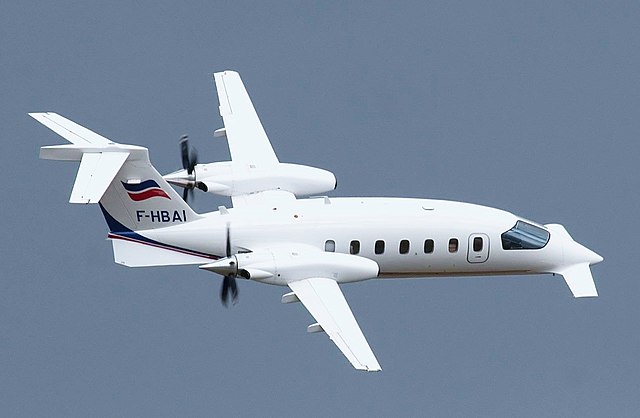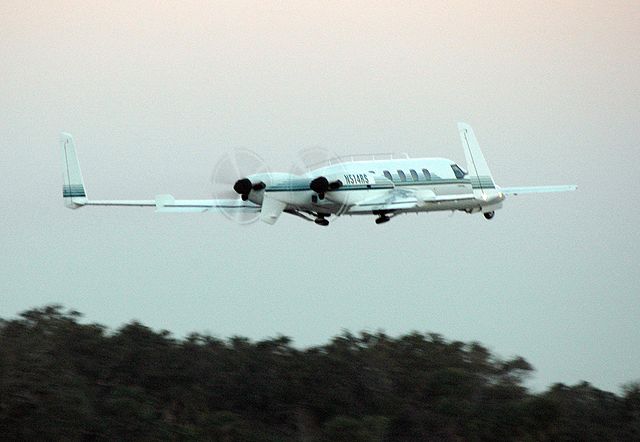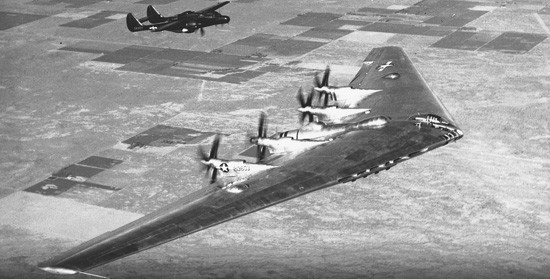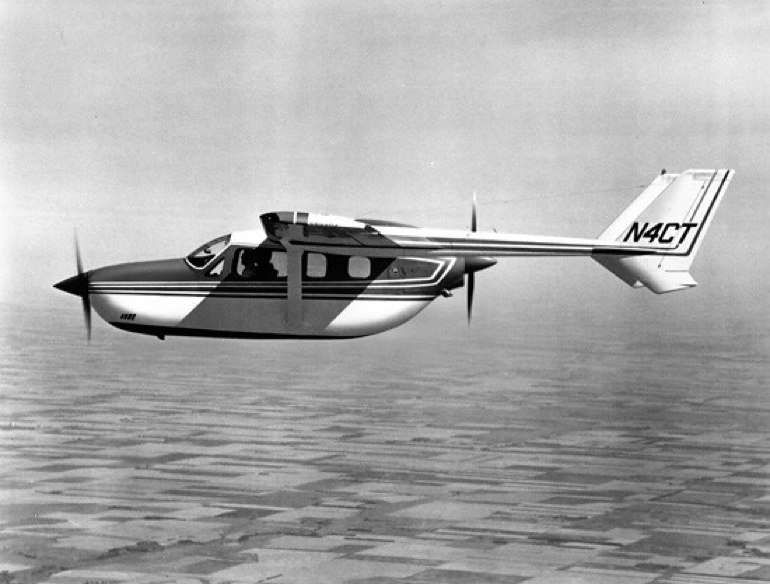
Propeller driven aircraft require designers to choose early in the design process to use a pusher configuration or a puller configuration. Each layout has its advantages and disadvantages and as with all design choices selecting one or the other is dependent on the underlying design goals. At a high level, what are the differences in pusher vs. puller propeller aircraft?
Puller aircraft are generally accepted as more efficient and better performing than propeller driven pusher aircraft. Pusher propeller designs have been adopted where specific design requirements mandate their use. Safety considerations between the two designs are largely operational in nature.
These tradeoffs can be summarized by examining the performance, efficiency and safety effects of each layout. First, let’s cover some examples of some unique pusher aircraft.
Pusher Aircraft Examples
Because of their unusual-ness in the broader aviation world, many pusher designs are relatively famous. They range from the Piaggio Avanti and Beechcraft Starship to the large flying wing bombers produced by Northrop in the late 40’s and early 50’s such as the YB-35.

Image Source

Image Source

Other examples include: Burt Rutan’s Long EZ and its variants, the Convair B36, the Cessna 337 (a push-pull configuration), the Velocity family of homebuilts, a wide variety of military unmanned aircraft, and perhaps the strangest looking of the bunch, the Edgely Optica (discussed in a moment).
Puller Aircraft Examples
To be blunt, well, just about anything else with a propeller.
Pusher vs. Puller: Performance and Efficiency
Fundamentally the performance of pusher aircraft is like that of puller aircraft with similar power outputs and weights. The difference is how efficiently the propulsion layout and the basic aerodynamic design achieves this performance. Runway performance can be affected by the pusher configuration and is also worth considering. First, propulsive efficiency should be considered.
Pusher vs. Puller: Propulsive Efficiency
Propulsion system efficiency is a function a range of factors, but intake losses, fuselage and propeller aerodynamic interactions and cooling are primary installation factors for efficient operation.
Propeller Efficiency
Consider first the pusher layout, where the propeller is located behind the wing or fuselage. As air moves across the aircraft toward the propeller, it becomes turbulent, and develops inconsistent small-scale flow patterns.
As the flow becomes turbulent, its overall speed tends to decrease as energy in the airflow is reduced by interaction with the airframe.
This effect can be described as propeller “blanking” and it can be minor, or quite severe. Pusher aircraft with propellers mounted behind the wing generally see fewer blanking effects than those with propellers installed behind a bulky fuselage such as the Cessna 337.

Propellers are most efficient when they ingest smooth, constant velocity airflow at an appropriate airspeed. The turbulent interactions of pusher propellers result in reduced efficiency and thus performance.
It also typically increases propeller noise for both passengers and outside observers. The Beechcraft Starship is well known for its distinct howling noise as it flies.
Thus, all things being equal, puller propeller layouts are more efficient for a given engine and propeller combination.
Turboprop Intake Efficiency
The most commonly installed turboprop engine in general aviation fleets, the PT-6A, is a “reverse flow” engine. This means that air enters the engine at the back, and flows forward toward the propeller, this results in intake losses as the air travels the length of the engine and reverses direction in the intake duct.
PT-6A powered pusher aircraft can avoid these intake losses by eliminating the flow reversal in the inlet. The notable example of this technique is the Piaggio Avanti, with wing mounted PT-6A engines. The overall efficiency improvements are minor in absolute terms but can add up over the life of the aircraft.
Pusher configurations allow for more efficient turboprop engine installations due to improved engine intake design.
Engine Cooling
Particularly for air cooled piston engines, engine cooling in the pusher configuration can be difficult to achieve. The same turbulent air disrupting flow to the propeller also disrupts flow to cooling intakes.
Aft mounted piston engines tend to require higher climb airspeeds, particularly during warm weather simply to maintain cooling performance.
Puller layout aircraft have the advantage of unobstructed cooling intakes and even some propulsive thrust to maintain engine temperatures, resulting in potentially lower climb speeds for the same ambient conditions.
Puller engine layouts provide superior cooling flow to piston engines thanks to unobstructed cooling intakes.
Aerodynamic Efficiency
Aerodynamically, puller designs allow designers to take advantage of the propeller’s thrust effects to reduce wing and tail sizing requirements. Thrust provided by propellers increases the airspeed over the “blown” section of the wing improving the total lift produced in the effected section.
This effect can, however, lead to substantial thrust effects due to changes in power output, which will be discussed later.
Pusher aircraft can benefit from reduced induced drag on horizontal tail surfaces. Rear mounted engines tend to locate the CG more rearward reducing the need for the tail to balance the pitching moment of the wing.
This reduction in tail loading appears in puller aircraft as well but requires intentional weight and balance planning to achieve. Note that pusher aircraft still operate within a range of normal weight and balance conditions, but the relative normal envelope tends to be more rearward.
Runway Performance
Assuming for a moment that all other design aspects are equal, pusher aircraft tend to suffer reduced takeoff performance relative to puller aircraft as a result of prop clearance concerns.
The ability to rotate the aircraft to a sufficiently nose high pitch attitude plays a substantial role in achieving short field takeoff distances. This is as much a safety concern as it is a performance factor, therefore designers generally take care to account for this issue.
It is worth noting that this aspect of comparison between pusher and puller designs is a generalized consideration. But for a moment if the Piaggio Avanti and King Air 250 are directly compared to one another, the King Air’s takeoff distances are approximately 1,000 feet shorter than the similarly sized Avanti. There are other considerations of course, but it is worth noting the King Air’s puller configuration does have a performance advantage.
In summary of comparing efficiency and performance for pusher and puller configurations, there are distinct advantages to the use of the puller configuration.
As a result, puller aircraft are the dominate design choice for modern aircraft. There are specific areas of improvement, but in general these improvements are offset by the general impact of decreased aerodynamic and propulsive efficiency.
Pusher vs Puller: Safety
Aircraft designers consider safety effects of design choices, and engine position is no different. Examining several examples of pusher configured aircraft, a theme emerges: canards and flying wings. The pusher engine location on these aircraft preserves weight and balance considerations and avoids propeller positions near passenger compartments.
Again, consider the Piaggio with its canard design. The pusher configuration simplifies cabin entry and avoids placing propellers near the normal and emergency exits. The pusher configuration also helps to reduce cabin noise as the propeller plane does not intersect the pressure vessel.
King Airs similarly avoid placing propellers near cabin entrances, but in exchange a substantial climb is required to enter the cabin at the rear.
Flying wings such as the experimental Northrop bombers needed the rearwardly mounted engines to manage weight and balance considerations. It also allowed bomb loading crews to access the underside of the aircraft from the front where there was more ground clearance and better visibility with the cockpit.
The designers of these aircraft sought to use specific aerodynamic techniques or tools to improve efficiency or achieve an operational goal, in doing so the pusher configuration was required to remain within the specific constraints and still have a safely operable aircraft.
Several safety considerations are worth examining: propeller strikes, visibility, and handling characteristics.
Propeller Strikes
As discussed above, rear mounted propellers on pusher aircraft are subject to increased prop strike risks both during takeoff and landing. The primary risk in both scenarios is over-rotation of the aircraft leading to a propeller strike. This limits the safe pitch attitude that can be used by the pilot.
Additionally, debris and water from runways and taxiways is more likely to impinge on the propeller causing damage, perhaps damage severe enough to warrant blade replacement or repair.
Puller aircraft in contrast benefit from placing propellers ahead of tires (which tend to project debris rearward), and consistently away from the ground. This is particularly noticeable on backcountry runways where taildraggers are the primary configuration.
Crew Visibility
Pusher aircraft offer a distinctly improved forward view for crew members. The Edgely Optica is the best example of this design consideration.

Image Source
For observation aircraft, especially those flying at low altitudes, improved forward visibility is an important design consideration. Good forward visibility allows crews to better avoid obstacles and maintain outside situational awareness with less effort and less maneuvering. Similar benefits are conferred to ground operations, which is critical on congested, busy airport ramps.
Handling Characteristics
This aspect of pusher design is complex and nuanced and particular to individual aircraft. However, some generalizations can be made.
As noted above, canard and flying wing designs generally are the preferred layouts for pusher designs. Canard and flying wing designs have unique weight and balance considerations to achieve acceptable handling characteristics. These aircraft generally require more rearward balanced centers of gravity, and engines are heavy pieces of machinery.
Thrust effects are the most notable shift in basic handling characteristics. Typically, puller aircraft will have a nose up pitch effect with the addition of power, but for pusher aircraft there is little to no thrust effect for most designs.
This characteristic is not to be considered bad, but it is different, requiring crews to accommodate themselves to different than “normal” handling characteristics.
In general, pusher aircraft are as safe as any puller style aircraft, but some considerations are required by the designers and crews that are otherwise less critical in puller aircraft.
Conclusion
Pusher aircraft are unique design solutions to particular design goals for a given airframe. Generally, pusher aircraft are associated with flying wing or canard type designs but may show up in more conventional layouts.
Generally, pusher aircraft suffer propulsive efficiency penalties and lose some aerodynamic benefits, but these losses are offset by the configuration requirements to achieve acceptable handling characteristics and safety considerations.
Related Reading
If you enjoyed this comparison format, you might also find these related articles interesting:



